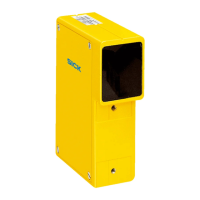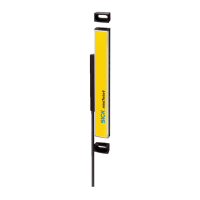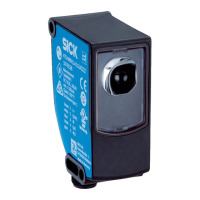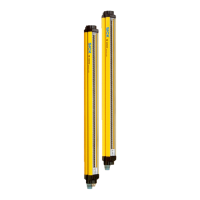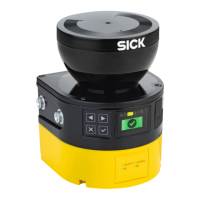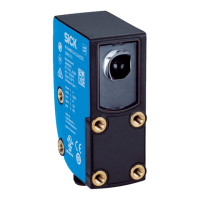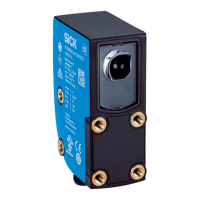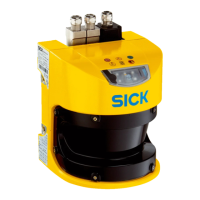16 Glossary
Response time The protective device’s response time is the maximum time
be
tween the occurrence of the event leading to the sensor’s
response and supply of the switch-off signal to the protective
device’s interface (for example OFF state of the OSSD pair).
OFF state The OFF state is the status of the outputs of the protective device,
where the controlled machine is triggered to quit its dangerous
state and the start-up of the machine is prevented (e.g., the volt‐
age at the OSSDs is LOW, so that the machine is switched off and
remains still).
CCF Common cause failure. Failures of various units due to a single
e
vent, whereby these failures do not cause each other.
DC
avg
Average diagnostic coverage (ISO 13849/EN ISO 13849)
Dangerous state A dangerous state is a status of the machine or facility, where peo‐
ple ma
y be injured. Protective devices prevent this risk if the
machine is operated within its intended use.
The figures in this document always show the dangerous state of
the machine as movement of a machine part. In practice, there
are different dangerous states, such as:
•
Machine movements
•
Electrical parts
•
Visible and invisible beam
•
A combination of multiple hazards
MTTF
D
Mean time to dangerous failure (ISO 13849/EN ISO 13849)
OSSD Output signal switching device: signal output for the protective
de
vice, which is used for stopping the dangerous movement.
An OSSD is a safety switching output. The functionality of each
OSSD is tested periodically. OSSDs are always connected in pairs
and must undergo dual-channel analysis for safety reasons. An
OSSD pair is formed from two OSSDs that are connected and ana‐
lyzed together.
PDDB Proximity device with defined behavior under fault conditions: (IEC
60947-5-3/
EN 60947-5-3)
PFH
D
Probability of dangerous failure per hour
PL Performance Level (ISO 13849/EN ISO 13849)
Retroreflector A retroreflector is a reflective material that extensively reflects the
inc
oming beam regardless of the alignment of the reflector mainly
in the direction back to the source of the beam (retroflection). In
contrast to this, other bright or reflective materials reflect the
incoming light in another direction (incoming angle equals outgo‐
ing angle). Examples of retroflectors include rear reflectors on
bicycles, high-visibility vests, and the reflective points on guide‐
posts.
GLOSSARY 16
8021417/2018-01-17 | SICK O P E R A T I N G I N S T R U C T I O N S | UE410 Safeguard Detector Box
49
Subject to change without notice
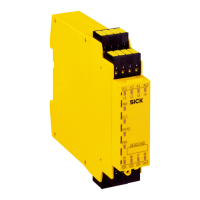
